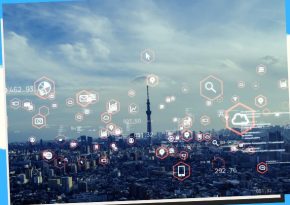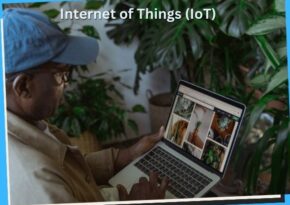
Beyond Limits: Exploring the Impact of Edge Computing in IoT!
Ready to empower your IoT landscape? Dive into edge computing, where innovation meets the edge to reshape data processing, elevating IoT experiences.
Beyond Limits: Exploring the Impact of Edge Computing in IoT
Edge computing is revolutionizing the Internet of Things (IoT) by enabling devices to process data locally instead of relying solely on distant cloud servers. This shift reshapes how data is handled, leading to faster, more efficient, and real-time decision-making. In this article, we explore the profound impact of edge computing on IoT, its benefits, challenges, case studies, and how it’s driving the future of connectivity.
What is Edge Computing in IoT?
Edge computing refers to processing data closer to the source of data generation (the “edge” of the network), rather than sending all of it to centralized cloud servers. This reduces latency, conserves bandwidth, and provides faster response times, all of which are critical for real-time applications in IoT. With millions of connected devices, edge computing must ensure IoT systems operate seamlessly and efficiently.
Benefits of Edge Computing in IoT
- Reduced Latency
By processing data locally at the edge, IoT devices can respond to real-time events almost instantly, which is crucial for applications like autonomous vehicles and industrial automation. - Bandwidth Efficiency
With edge computing, only necessary data is sent to the cloud, reducing the bandwidth needed and alleviating pressure on network infrastructure. - Improved Security
By processing sensitive data locally, edge computing reduces the risk of exposing it to cyber threats that might arise during transmission to the cloud. - Scalability
Edge computing allows IoT networks to scale more easily. As the number of connected devices grows, the demand for centralized cloud infrastructure increases. - Cost Savings
Reducing the volume of data sent to the cloud cuts storage and processing costs, enabling organizations to manage IoT systems more cost-effectively. - Enhanced Reliability
Edge computing ensures that IoT devices continue functioning even when cloud connectivity is temporarily unavailable, providing greater reliability in critical applications. - Faster Data Processing
Local data processing enables IoT devices to make faster decisions, improving the overall responsiveness of applications, from industrial monitoring to smart home devices. - Optimized Energy Use
Edge computing can help optimize energy consumption in IoT devices, especially those that are remote or battery-powered, by minimizing the need for data transmission over long distances. - Real-Time Analytics
Localized processing allows for instant data analysis, facilitating real-time insights and decision-making, which is critical for dynamic environments like manufacturing and healthcare. - Data Privacy
With edge computing, organizations can retain more control over where data is stored and processed, enhancing privacy compliance and meeting regulatory requirements.
Tips for Implementing Edge Computing in IoT
- Identify the Right Use Case
Prioritize edge computing for applications requiring low latency and real-time decision-making, such as autonomous vehicles or industrial automation. - Focus on Security
Implement strong security measures, including encryption and secure access control, to protect data processed at the edge from cyber threats. - Start Small
Begin by deploying edge computing solutions in specific parts of your IoT network to test performance before scaling to larger systems. - Choose Scalable Solutions
Select edge computing platforms that can easily scale as your IoT devices and data processing needs grow. - Optimize Data Flow
Process as much data as possible at the edge to minimize the amount sent to the cloud and ensure bandwidth efficiency. - Integrate AI at the Edge
Implement AI and machine learning models on edge devices to enable smarter, more autonomous decision-making without relying on cloud servers. - Monitor Performance Regularly
Continuously monitor the performance of your edge computing network to ensure it’s delivering the expected benefits in terms of speed, reliability, and security. - Leverage Multi-Cloud and Hybrid Cloud Models
Consider using hybrid cloud models in combination with edge computing for applications that require occasional cloud access but need most of their processing at the edge. - Ensure Device Interoperability
Choose edge computing platforms that are compatible with a wide range of IoT devices to ensure smooth integration across your network. - Plan for Data Compliance
Ensure that your edge computing implementation complies with data privacy regulations, especially when processing sensitive or personal data at the edge.
Insights into Edge Computing’s Impact on IoT
- Real-Time Data Processing Will Drive IoT Evolution
As IoT networks grow, edge computing will be critical in ensuring that real-time data processing remains efficient and scalable. - Edge Computing Will Empower Autonomous Systems
Edge computing will power more autonomous systems, from self-driving cars to automated manufacturing lines, by enabling local decision-making. - AI Integration is Key to Maximizing Edge Potential
Integrating AI and machine learning at the edge allows for smarter, context-aware decision-making without the latency of cloud-based computing. - Industry 4.0 Will Benefit Immensely from Edge Computing
Manufacturing, supply chains, and industrial IoT applications will rely heavily on edge computing to meet the demands of real-time monitoring, predictive maintenance, and automation. - Edge Computing Enhances IoT Scalability
Edge computing helps scale IoT networks by reducing reliance on centralized cloud infrastructure, ensuring that performance remains high as the number of connected devices increases. - Edge Computing Reduces Operational Costs
By reducing the need for constant cloud communication and storage, edge computing cuts costs associated with bandwidth and cloud services. - Latency Sensitivity Will Increase Across Industries
As industries like healthcare, retail, and logistics increasingly adopt IoT solutions, edge computing will be vital in handling the low-latency requirements of these sectors. - The Rise of Edge Computing Will Lead to Smarter Cities
With the need for real-time data in urban management, edge computing will play a key role in the development of smarter cities, enhancing traffic management, energy usage, and public safety. - Security Will Be a Focus of Edge Computing Advancements
As IoT devices generate more sensitive data, edge computing will become critical in implementing security measures at the source of data generation. - IoT Data Analytics Will Shift to the Edge
The future of IoT data analytics will involve more local processing at the edge, minimizing the delay in obtaining insights and improving overall system performance.
Case Studies of Edge Computing in IoT
- Autonomous Vehicles (Tesla)
Tesla’s autonomous driving system relies on edge computing to process data from cameras and sensors in real time, enabling quick decision-making for navigation and safety. - Smart Grids (GE)
General Electric uses edge computing in smart grids to monitor power distribution and adjust energy flow in real time, improving efficiency and minimizing energy waste. - Manufacturing (Siemens)
Siemens leverages edge computing in its industrial IoT platforms to enable predictive maintenance on factory equipment, reducing downtime and enhancing operational efficiency. - Healthcare (Medtronic)
Medtronic uses edge computing in its medical devices to process patient data locally, allowing for real-time health monitoring and immediate interventions when necessary. - Retail (Walmart)
Walmart uses edge computing to track inventory in real time, ensuring products are in stock and reducing operational inefficiencies across its vast network of stores. - Agriculture (John Deere)
John Deere implements edge computing in agricultural machinery to collect and process data locally, improving crop monitoring and optimizing field operations. - Logistics (DHL)
DHL uses edge computing to track shipments in real-time, providing immediate updates and route optimization based on changing conditions. - Smart Buildings (Honeywell)
Honeywell’s smart building solutions use edge computing to monitor and control systems like lighting, HVAC, and security, providing energy savings and enhanced user comfort. - Energy (Schneider Electric)
Schneider Electric uses edge computing to monitor power usage in real time, providing insights for energy optimization and reducing carbon footprints. - Smart Homes (Amazon Alexa)
Amazon’s Alexa uses edge computing to process voice commands locally, ensuring a quicker and more responsive smart home experience.
FAQ about Edge Computing in IoT
- What is edge computing in IoT?
Edge computing processes data closer to the source, reducing latency and bandwidth requirements, enabling real-time decision-making for IoT devices. - Why is edge computing important for IoT?
It reduces latency, improves performance, and enhances the scalability of IoT networks by processing data locally rather than sending it to the cloud. - How does edge computing improve security?
By processing sensitive data locally, edge computing reduces the risk of data exposure during transmission, ensuring greater privacy and security. - What are the challenges of edge computing in IoT?
Challenges include managing device interoperability, security, and ensuring sufficient computing power at the edge for complex tasks. - How can edge computing help reduce operational costs?
By minimizing data transmission to the cloud, edge computing reduces the need for expensive bandwidth and cloud storage, cutting operational costs. - Can edge computing work with cloud computing?
Yes, edge computing can complement cloud computing by processing time-sensitive data at the edge while sending other data to the cloud for analysis and storage. - What industries benefit most from edge computing in IoT?
Industries such as manufacturing, healthcare, transportation, and smart cities benefit greatly from edge computing’s low-latency and real-time capabilities. - What is the role of AI in edge computing?
AI can be integrated at the edge to enable devices to make smarter, more autonomous decisions without relying on cloud-based processing. - Is edge computing the future of IoT?
Yes, edge computing is essential for the future of IoT, as it allows for faster, more scalable, and more secure operations across various IoT applications. - How do I start implementing edge computing in my IoT network?
Start by identifying use cases that require low-latency processing and consider solutions that provide local data storage, security, and analytics capabilities.
Conclusion
Edge computing is shaping the future of IoT by enabling faster, more efficient data processing at the source. Its ability to reduce latency, improve security, and support real-time decision-making transforms industries and empowers IoT applications to reach their full potential. As businesses and cities adopt IoT on a larger scale, edge computing will be pivotal in ensuring that these systems operate seamlessly and sustainably. Embracing edge computing in IoT will improve the user experience and unlock new levels of innovation and efficiency.
Link Resources
- Edge Computing and IoT Overview
- Understanding Edge Computing in IoT
- Edge Computing for Industrial IoT
- The Benefits of Edge Computing
- AI at the Edge: Transforming IoT
Key Phrases
Edge computing, IoT, real-time data, bandwidth efficiency, local data processing, latency reduction, IoT security, smart devices, cloud-complementary solutions, industry transformation
Best Hashtags
#EdgeComputing, #IoT, #RealTimeData, #SmartDevices, #LatencyReduction, #IndustrialIoT, #AIandIoT, #FutureOfConnectivity, #BandwidthEfficiency, #IoTInnovation
Save/Share this story with QR CODE
Disclaimer
This article is for informational purposes only and does not constitute endorsement of any specific technologies or methodologies and financial advice or endorsement of any specific products or services.
 Need to get in touch?
Need to get in touch?

We appreciate your reading. 
1.) 

Your DONATION will be used to fund and maintain NEXTGENDAY.com
Subscribers in the Philippines can make donations to mobile number 0917 906 3081, thru GCash.
3.) 
4.) 
AFFILIATE PARTNERS

World Class Nutritional Supplements - Buy Highest Quality Products, Purest Most Healthy Ingredients, Direct to your Door! Up to 90% OFF.
Join LiveGood Today - A company created to satisfy the world's most demanding leaders and entrepreneurs, with the best compensation plan today.

 Business, Finance & Technology
Business, Finance & Technology


 Sustainable Connectivity: Exploring Energy Efficiency in 5G Networks
Sustainable Connectivity: Exploring Energy Efficiency in 5G Networks 




 Discover the magic of small-scale transactions – delve into […]
Discover the magic of small-scale transactions – delve into […]